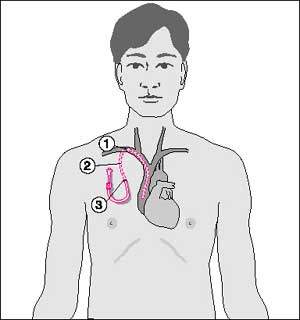The standard model for an active galactic nucleus is based upon an accretion disc that forms around a supermassive black hole (SMBH) at the core region. The radiation from an active galactic nucleus results from the gravitational energy of matter as it falls toward the black hole from the disc. In about 10% of these objects, a diametrically opposed pair of energetic jets ejects particles from the core at velocities close to the speed of light. The mechanism for producing these jets is still not well understood.
Once protogalaxies began to form and contract, the first halo stars (called Population III stars) appeared within them. These were composed almost entirely of hydrogen and helium, and may have been massive. If so, these huge stars would have quickly consumed their supply of fuel and became supernovae, releasing heavy elements into the interstellar medium. This first generation of stars re-ionized the surrounding neutral hydrogen, creating expanding bubbles of space through which light could readily travel.
The dust present in the interstellar medium is opaque to visual light. It is more transparent to far-infrared, which can be used to observe the interior regions of giant molecular clouds and galactic cores in great detail. Infrared is also used to observe distant, red-shifted galaxies that were formed much earlier in the history of the universe. Water vapor and carbon dioxide absorb a number of useful portions of the infrared spectrum, so high-altitude or space-based telescopes are used for infrared astronomy.
A galaxy is a massive, gravitationally bound system that consists of stars and stellar remnants, an interstellar medium of gas and dust, and an important but poorly understood component tentatively dubbed dark matter. The name is from the Greek word galaxias , literally meaning "milky", a reference to the Milky Way galaxy. Typical galaxies range from dwarfs with as few as ten million (107) stars, up to giants with a hundred trillion (1014) stars, all orbiting the galaxy's center of mass. Galaxies may contain many star systems, star clusters, and various interstellar clouds. The Sun is one of the stars in the Milky Way galaxy; the Solar System includes the Earth and all the other objects that orbit the Sun.
At present, most star formation occurs in smaller galaxies where cool gas is not so depleted. Spiral galaxies, like the Milky Way, only produce new generations of stars as long as they have dense molecular clouds of interstellar hydrogen in their spiral arms. Elliptical galaxies are already largely devoid of this gas, and so form no new stars. The supply of star-forming material is finite; once stars have converted the available supply of hydrogen into heavier elements, new star formation will come to an end.
Subscribe to:
Post Comments (Atom)













No comments:
Post a Comment